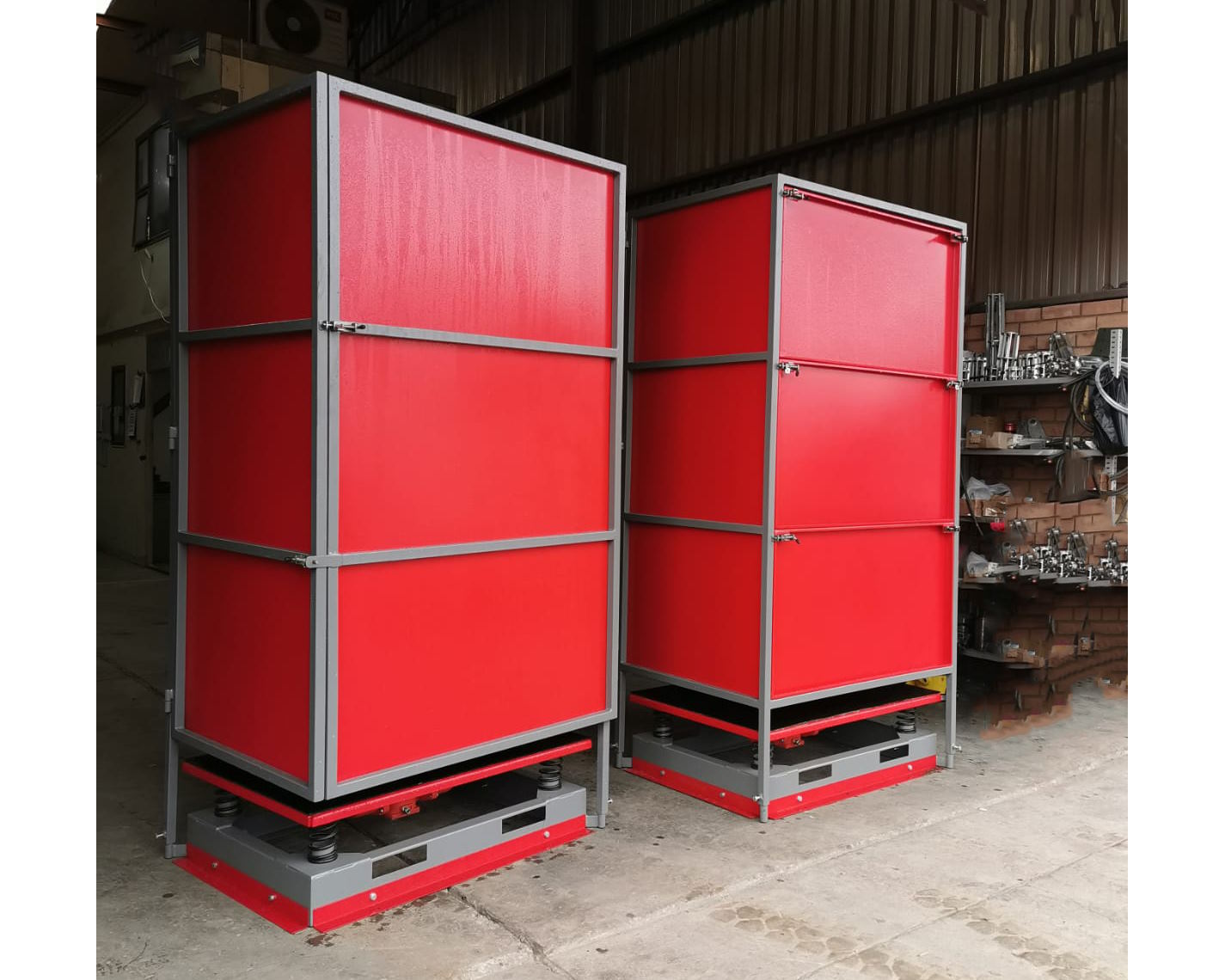Products
-
1150x780mm, 1200x800mm, 1150x980mm, 1200x1000mm
-
0.66 kW 380 Volt
-
1040Lx1700Hx1300W
-
350kg
What is a Pallet Vibrator?
A Pallet Vibrator
- is intended for easy and efficient placing of sacks on the pallet
- by means of guided vibrations it comes to the purposeful distribution of material in the whole vibrated space
- by vibration of potatoes, carrot, onion and similar soft materials it does not come to the damage of low layers
- easy filling by means of a gradually removable wall
- easy taking out of a pallet with a material by opening of 2 wall
- material on the pallet holds after taking out as a unit
- the tonnage of the transportation means is utilized at maximum
- it enables an easy and quick manipulation with pallets
Vibrating tables or shake tables are sometimes used to test products to determine or demonstrate their ability to withstand vibration. Testing of this type is commonly done in the automotive, aerospace, and defence industries. These machines are capable of producing three different types of vibration profile sine sweep, random vibration, and synthesized shock. In all three of these applications, the part under test will typically be instrumented with one or more accelerometers to measure component response to the vibration input. A sine sweep vibration profile typically starts vibrating at low frequency and increases in frequency at a set rate (measured in hertz). The vibratory amplitude as measured in gs may increase or decrease as well. A sine sweep will find resonant frequencies in the part. A random vibration profile will excite different frequencies along a spectrum at different times. Significant calculation goes into making sure that all frequencies get excited to within an acceptable tolerance band. A random vibration test suite may range anywhere from 30 seconds up to several hours. It is intended to synthesize the effect of, for example, a car driving over rough terrain or a rocket taking off. A synthesized shock pulse is a short duration high level vibration calculated as a sum of many half-sine waves covering a range of frequencies. It is intended to simulate the effects of an impact or explosion. A shock pulse test typically lasts less than a second. Vibrating tables can also be used in the packaging process in material handling industries to shake or settle a container so it can hold more product.
